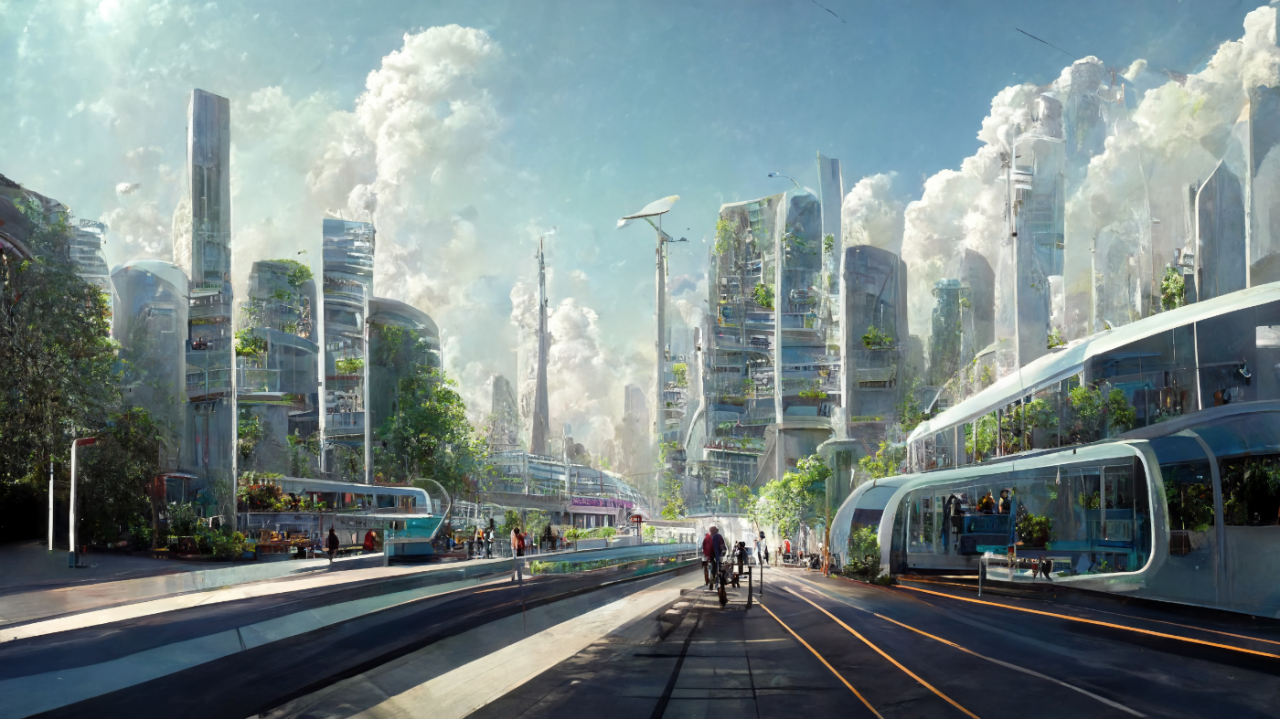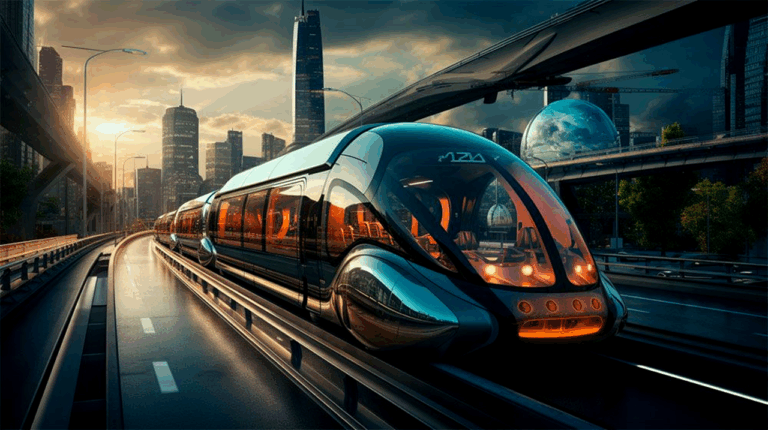The landscape of transportation is undergoing a revolutionary transformation, moving beyond the conventional reliance on internal combustion engines and individual vehicle ownership. We are on the cusp of an era where mobility is smarter, more sustainable, and seamlessly integrated into our daily lives. This shift, often dubbed “Future Mobility,” encompasses a wide array of innovations, from autonomous vehicles and electric powertrains to advanced public transit systems and integrated urban planning. It’s a holistic rethinking of how people and goods move, driven by technological advancements, environmental imperatives, and evolving societal needs. This article will delve deep into the multifaceted aspects of future mobility, exploring its core components, the drivers behind this revolution, its profound impact across various sectors, and the challenges and opportunities that lie ahead.
Defining Future Mobility

Future Mobility is more than just a collection of new vehicles; it represents a paradigm shift in how we conceive and implement transportation. It’s about creating an interconnected, efficient, and environmentally friendly transportation ecosystem.
A. Autonomous Vehicles (AVs): At the forefront of this revolution are self-driving cars, trucks, and even drones. These vehicles use an array of sensors (LiDAR, radar, cameras), artificial intelligence, and sophisticated algorithms to perceive their surroundings, make decisions, and navigate without human intervention.
A. Levels of Automation: The Society of Automotive Engineers (SAE) defines six levels of driving automation, ranging from Level 0 (no automation) to Level 5 (full automation under all conditions). The progression towards Level 5 is gradual, with significant hurdles in sensor technology, AI robustness, and regulatory frameworks.
B. Impact on Safety: A primary driver for AV development is the potential to drastically reduce human error, which accounts for the vast majority of road accidents.
C. Operational Efficiency: AVs can optimize routes, reduce traffic congestion through platooning, and potentially operate 24/7, leading to more efficient logistics and ride-sharing services.
B. Electrification of Transportation: The move away from fossil fuels towards electric power sources is fundamental to sustainable future mobility.
A. Electric Vehicles (EVs): This includes battery electric vehicles (BEVs), plug-in hybrid electric vehicles (PHEVs), and fuel cell electric vehicles (FCEVs). EVs offer zero tailpipe emissions, contributing to improved air quality in urban areas.
B. Charging Infrastructure: The expansion of robust and widespread charging networks (including fast-charging and wireless charging) is crucial for widespread EV adoption.
C. Grid Integration: Smart charging and vehicle-to-grid (V2G) technologies allow EVs to interact with the power grid, balancing demand and supply, and even acting as mobile energy storage units.
C. Shared Mobility Services: The emphasis shifts from individual car ownership to accessing transportation as a service.
A. Ride-Sharing (e.g., Uber, Lyft): Connecting passengers with drivers for on-demand rides. The integration of AVs into these fleets promises even greater efficiency and lower costs.
B. Car-Sharing (e.g., Zipcar): Providing short-term access to vehicles without the burdens of ownership.
C. Micro-Mobility (e.g., e-scooters, e-bikes): Offering convenient, short-distance transportation options, particularly in urban environments, to solve the “last mile” problem.
D. Public Transit Integration: Seamless integration of shared mobility with existing public transport networks creates a truly multimodal system.
D. Connected Infrastructure: The communication network that enables vehicles and infrastructure to “talk” to each other.
A. Vehicle-to-Vehicle (V2V) Communication: Allows vehicles to share data about speed, position, and braking, improving safety and traffic flow.
B. Vehicle-to-Infrastructure (V2I) Communication: Enables vehicles to receive information from traffic lights, road sensors, and smart signage, optimizing routes and reducing congestion.
C. Vehicle-to-Everything (V2X) Communication: An umbrella term encompassing V2V, V2I, and Vehicle-to-Pedestrian (V2P) communication, creating a comprehensive safety and efficiency network.
D. Smart Traffic Management: Real-time data from connected vehicles and infrastructure allows for dynamic traffic light control, adaptive route guidance, and proactive congestion management.
E. Urban Air Mobility (UAM): The emerging concept of using electric vertical takeoff and landing (eVTOL) aircraft for passenger and cargo transport within urban and suburban areas.
A. Electric Propulsion: UAM aircraft are predominantly electric, offering quiet, emission-free operation.
B. Vertiports: Dedicated infrastructure for takeoff, landing, and charging of eVTOLs will be required.
C. Applications: Potential uses include air taxis, emergency services, and rapid delivery of goods.
The Driving Forces Behind the Transformation
Several powerful factors are accelerating the shift towards future mobility:
A. Environmental Imperatives:
A. Climate Change Mitigation: Transportation is a significant contributor to greenhouse gas emissions. Future mobility solutions, particularly electrification, are crucial for achieving climate targets and improving air quality.
B. Resource Depletion: Reducing reliance on fossil fuels addresses concerns about finite resources and geopolitical dependencies.
B. Urbanization and Congestion:
A. Growing Urban Populations: More people living in cities puts immense pressure on existing transportation infrastructure, leading to severe congestion.
B. Inefficient Land Use: Traditional car ownership demands vast amounts of urban land for parking and roads. Shared and autonomous mobility can free up valuable urban space.
C. Improved Liveability: Reduced traffic, noise, and pollution contribute to healthier and more enjoyable urban environments.
C. Technological Advancements:
A. Artificial Intelligence (AI) and Machine Learning (ML): Essential for autonomous decision-making, predictive analytics in traffic management, and optimizing logistics.
B. Sensor Technology: Miniaturized, more accurate, and affordable sensors (LiDAR, radar, cameras) are vital for AV perception.
C. Connectivity (5G and Beyond): High-bandwidth, low-latency networks are critical for V2X communication, real-time data exchange, and seamless integration of mobility services.
D. Battery Technology: Improvements in energy density, charging speed, and cost of batteries are driving EV adoption.
D. Changing Consumer Preferences:
A. Access Over Ownership: Younger generations, particularly in urban areas, are increasingly prioritizing access to transportation services over the financial burden and responsibilities of car ownership.
B. Convenience and On-Demand Services: The expectation for immediate and personalized services extends to transportation.
C. Sustainability Consciousness: A growing awareness of environmental impact influences consumer choices towards greener mobility options.
E. Economic Opportunities:
A. New Business Models: The shift creates vast opportunities for new companies in software, services, infrastructure, and vehicle manufacturing.
B. Cost Reduction: Autonomous and electric fleets can reduce operational costs for logistics and public transport.
C. Increased Productivity: Less time spent commuting in traffic translates to increased productivity.
Impact Across Key Sectors

The implications of future mobility extend far beyond just how we get around, touching every aspect of society and economy.
A. Automotive Industry:
A. Shift from Manufacturing to Services: Traditional automakers are transforming into mobility service providers, investing heavily in software, AI, and autonomous driving technology.
B. Supply Chain Restructuring: The move to EVs requires new supply chains for batteries and electric powertrains, while traditional internal combustion engine component suppliers face disruption.
C. Competition from Tech Giants: Companies like Google (Waymo), Apple, and Amazon are entering the mobility space, bringing new approaches and challenging incumbents.
B. Urban Planning and Infrastructure:
A. Redesigning Cities: Less need for parking lots means space can be repurposed for green areas, housing, or pedestrian zones. Dedicated lanes for AVs and public transit.
B. Smart City Integration: Mobility data can inform urban development, resource allocation, and emergency response.
C. Charging Infrastructure Development: Significant investment in public and private charging stations is required.
D. Digital Infrastructure: Robust 5G networks and edge computing capabilities become critical for connected mobility.
C. Energy Sector:
A. Increased Electricity Demand: Widespread EV adoption will significantly increase electricity consumption, necessitating upgrades to grid infrastructure and a greater reliance on renewable energy sources.
B. Smart Grid Integration: EVs as mobile storage units can help stabilize the grid and manage peak demand.
C. Hydrogen Economy: For heavy-duty transport and some aviation, green hydrogen production and distribution networks will become increasingly important.
D. Logistics and Supply Chain:
A. Autonomous Last-Mile Delivery: Drones and robotic vehicles for efficient, fast, and cost-effective last-mile delivery.
B. Automated Long-Haul Trucking: Autonomous trucks can operate 24/7, reducing labor costs and improving delivery times.
C. Optimized Freight Movement: Data analytics and AI will enable highly optimized routing and scheduling of goods, reducing waste and emissions.
E. Insurance Industry:
A. Shift in Liability: As vehicles become more autonomous, liability for accidents may shift from human drivers to vehicle manufacturers or software providers.
B. New Risk Models: Insurance companies will need to develop new actuarial models based on autonomous driving data and cybersecurity risks.
C. Reduced Accident Rates: Ultimately, AVs could significantly reduce accident frequency, transforming the core business model of automotive insurance.
F. Employment:
A. Job Displacement: Traditional roles in driving (e.g., taxi drivers, truck drivers) may face displacement.
B. New Job Creation: Demand for software engineers, AI specialists, data scientists, cybersecurity experts, and infrastructure developers will surge.
C. Retraining and Upskilling: Governments and industries will need to invest in retraining programs to prepare the workforce for new roles in the mobility sector.
Challenges and Opportunities
While the future of mobility promises immense benefits, significant challenges must be addressed for its successful implementation.
A. Regulatory and Legal Frameworks:
A. Standardization: Harmonizing regulations across different jurisdictions for autonomous vehicles, data sharing, and safety standards is crucial.
B. Liability in Accidents: Clearly defining legal liability in accidents involving autonomous vehicles is complex and still evolving.
C. Ethical Considerations: Programming AVs to make ethical decisions in unavoidable accident scenarios (e.g., trolley problem) presents profound philosophical and practical challenges.
D. Privacy Concerns: The vast amounts of data collected by connected vehicles raise significant privacy implications for individuals and require robust data protection regulations.
B. Technological Hurdles:
A. AI Robustness: Ensuring AI systems in AVs can reliably handle all conceivable driving conditions, including extreme weather, diverse road users, and unpredictable human behavior.
B. Cybersecurity: Protecting connected vehicles and infrastructure from hacking, data breaches, and malicious attacks is paramount for safety and public trust.
C. Sensor Limitations: Current sensor technology still faces limitations in dense fog, heavy rain, or distinguishing between objects in complex environments.
D. Battery Performance: While improving, battery range anxiety, charging times, and the lifespan of batteries remain areas for continuous research and development.
C. Public Acceptance and Trust:
A. Safety Concerns: Overcoming public skepticism and fear regarding autonomous vehicles, particularly after high-profile accidents.
B. Perception of Job Losses: Addressing concerns about job displacement and ensuring a just transition for affected workforces.
C. Data Privacy: Building public trust around how personal mobility data is collected, used, and protected.
D. Accessibility and Equity: Ensuring that future mobility solutions are accessible and affordable to all segments of society, preventing a digital divide in transportation.
D. Infrastructure Investment:
A. Charging Infrastructure: Building out a comprehensive and reliable charging network requires massive investment from both public and private sectors.
B. Digital Backbone: Deploying 5G networks, V2X communication infrastructure, and smart city sensors demands substantial capital expenditure.
C. Upgrading Roads: Integrating AVs may require smart roads with embedded sensors and communication capabilities.
E. Economic Disruption:
A. Impact on Traditional Industries: The shift will disrupt established industries like fossil fuel production, vehicle maintenance, and parts manufacturing.
B. New Business Models: While creating opportunities, the transition period can be challenging for companies that fail to adapt.
F. Opportunities for Innovation and Growth:
A. Smart City Development: Future mobility is a cornerstone of smart cities, offering opportunities for integrated urban management and enhanced quality of life.
B. New Services and Products: The emergence of entirely new service models (e.g., Robotaxi networks, on-demand parcel delivery by drones).
C. Environmental Benefits: Significant reductions in air pollution, noise, and greenhouse gas emissions.
D. Increased Safety: The potential to drastically reduce road fatalities and injuries.
E. Improved Efficiency: Reduced traffic congestion, optimized travel times, and more efficient use of resources.
Conclusion
The unveiling of future mobility is not merely an incremental improvement in transportation but a transformative societal shift. It promises to deliver safer, cleaner, and more efficient ways for people and goods to move, fundamentally reshaping our cities, industries, and daily lives. While the path is paved with complex technological, regulatory, and societal challenges, the opportunities for innovation, economic growth, and a more sustainable future are immense. As governments, industries, and research institutions collaborate, investing in smart infrastructure, advanced technologies, and robust policy frameworks, the vision of a connected, autonomous, electric, and shared mobility ecosystem will increasingly become a reality. This revolution is not just about moving from point A to point B; it’s about redefining human freedom, sustainability, and urban living for generations to come. The journey has begun, and its destination promises a brighter, more mobile future.




